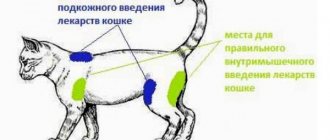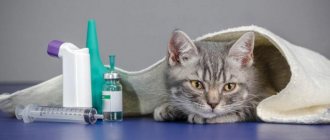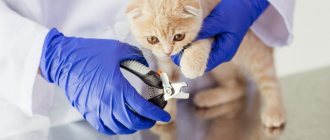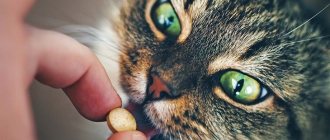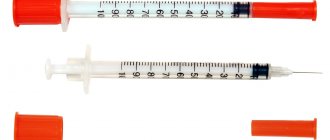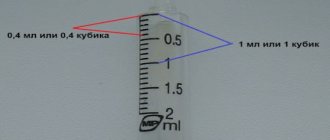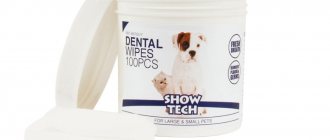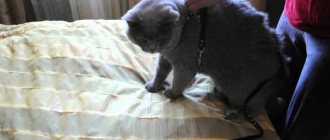← Return to blog
How to give a pill to a cat
March 09, 2021
Even the healthiest cat needs to be given tablets sometimes to rid the pet of worms. If the cat gets sick, treatment can become a nightmare for the owner and the cat itself. Because cats hate pills. And it’s not a bad character, but a rather delicate oral cavity. Well, in character too.
When it comes to pills, most cats are fully prepared to welcome their owners.
There are several ways to give a pill to a cat while maintaining your health and the cat’s nerves.
When is the best time to give your cat pills?
Pills are given in the following situations:
- Long-term use of antibiotics is required. After 4 days, all the paws will be punctured, it will be painful for the cat to walk, so the doctor prescribes pills.
- With quarterly dewormings: tablets expel tapeworms and roundworms.
- To protect pets from fleas, ticks, and worms. Unlike drops on the withers, you do not need to wait for the toxic liquid to be absorbed. You can give tablets to several animals at once.
The medicine is fed in the morning on an empty stomach or between feedings, unless the instructions indicate otherwise.
How to give medicine to a cat?
For reserved cats, putting the tablet on the tongue is easy. You need to give the tablet in a certain position and make sure that the cat swallows it and does not choke. You should be careful with an aggressive pet, because when it breaks out and resists, it can scratch and bite, and spits out the drug.
It is important to pay attention to the label before giving your cat medicine.
It is necessary to take into account giving the tablets on an empty stomach or taking them after meals. Some drugs can be mixed, others are not recommended to be crushed and damage the shell so that the medicine is absorbed in a certain area of the digestive system (often the intestinal or stomach area). The shell is responsible for this, which dissolves in an acidic or alkaline environment. The cat wants to eat the flavored tablets on his own. You can feed them without any problems. Therefore, they should be stored in a place inaccessible to the animal, so that the cat does not eat an excessive dose of the drug.
Suspension and drops
The suspension form of the medicine can be given to the animal using a regular syringe, removing the needle from it.
In cases where liquid medications cannot be given independently and mixed with food, they are added to food, milk and stirred. So, the medicine can be given to the kitten to drink with milk. You need to give your baby a drink according to the same scheme. If it is important to take the suspension yourself, then you should use a syringe. You don't need a needle to take it. The required amount of the drug is drawn into the injector. The cat is placed on your lap and turned sideways.
If the pet is calm, then the owner can cope independently, holding it with his hand in a sitting position. With the other limb, you should lift the animal’s head and place the syringe in the cheek area and quickly pour in the liquid. Drops can be given from a syringe. It is important to bury the kitten according to the same recommendations. It is important that the cat has time to swallow the product and does not choke, because if the mouth is open, then the pharynx is not completely controlled by it. It is necessary to carry out manipulation so that the product does not enter the respiratory tract. When coughing occurs, the cat is placed on the floor to catch its breath. You cannot do without examining your throat for the presence of the drug. Sometimes you need help to recover. You need to drink the product over time.
Whole tablets
The process of administering the tablet to animals is simplified using the introducer tool.
To feed aggressive animals, you can use an auxiliary equipment - an introducer. The tool looks like a syringe. It is equipped with a high quality soft tip. There are cuts on it, making it easier to place the tablet on the root of the tongue. It is allowed to place a small amount of water in it so that the pill can more easily slip into the digestive system.
Calm pets are pressed sideways to the person and the left hand covers the animal’s head. The upper jaw is grasped with the thumb and index finger. Fingers are inserted behind the fangs - this way you can open your mouth. With the other hand, place the drug on the root of the tongue. After this, it is important to keep the mouth closed and stroke the cat's throat, provoking the swallowing reflex. If the pill can be crushed and mixed with food, then the powder is added to the treat.
The evil ones are held by one person, and the manipulation is carried out by another. If the cat is especially aggressive, they wrap it in a blanket, leaving only the head exposed so that it does not scratch. Raise the head so that the cat does not spit out. They quickly feed the product, which eliminates the possibility of severe fright, stress and excessive drooling. This often interferes with obtaining a positive result.
Powder
The animal can take this form of the drug diluted from a spoon.
To prevent the powder mixture from sticking to the respiratory and digestive tracts, it should be mixed with water. The liquid is poured 1 drop at a time until it becomes mushy. The pulp is collected with the handle of a spoon. The cat is held in the same way as when taking the tablets. The product must be put in the mouth, after which the area of the larynx is stroked. It is important to make sure that the cat eats the medicine and does not spit it back out. A more liquid mixture is instilled with a syringe.
If the powder is allowed to be mixed, then it is added to the meat, yolk or food and offered to the cat.
Liquid medicine can be poured into the cat's mouth using a syringe. Administer while sitting on the owner's lap, holding the head with one hand and inserting fingers into the corners of the mouth to open the oral cavity. Drops drip onto the root of the tongue. Drops that can be mixed with water or food can simply be mixed with the animal’s favorite treat. Thus, the cat uses the product itself and no additional actions are required. This makes it easier to force the cat to swallow the drug.
How are capsules and tablets given?
It will be easier for your pet to swallow the drug after lubricating it with oil.
The gelatinous shell of the dragee often sticks to the digestive organs. Therefore, you should drop a drop of oil onto the capsule and rub it over the surface. The oil does not dissolve the shell and promotes better glide of the drug through the digestive system. If the drug can be diluted with water or food, the capsule is opened and mixed with the product. Then you can feed the medicine to your pet without any problems.
Collecting information
If you are treating a pet and have been prescribed pills, I recommend that you immediately ask your veterinarian:
- is it possible to replace the medicine with a suspension or injections;
- Is it possible to crush the tablet and give it to the animal in powder form?
- Is it permissible to mix the medication with food?
The specialist will, of course, provide you with the necessary information. But you won’t run to the veterinary clinic for details if something suddenly doesn’t go according to plan. In any case, there are alternative options for taking the drug that are easier and less traumatic for both the cat and the owner. Let's look at and discuss them in detail.
Emotional mood
Do not forget to calm the cat throughout the procedure by talking affectionately to it. This works best if you imagine that in front of you is a very small child who does not yet speak, whom you persuade to eat another spoon “for dad” and “for mom.” At the same time, women instinctively raise their voices and develop gentle melodious intonations.
Naturally, you can say whatever you want and even perform children’s sayings and nursery rhymes - practice shows that they have the same calming effect on cats as they do on babies. Try not to be nervous yourself, behave calmly and confidently, and we hope our advice will help you with this.
Step-by-step procedure
If this is your first time giving your cat a pill, you need to have at least a rough idea of how this procedure goes. It is advisable that you have an assistant who carefully but firmly holds the cat. Later, after acquiring a certain skill, you will learn to give medicine to your cat without outside help.
First stage: preparation
Wait until the cat is in a calm mood. Caress her and calm her down. Ideally, the animal should be sleepy - then it will resist less.
If your pet has a temperament, wrap it in a thick towel - this way you will avoid scratches and even bites. Scratches are not so bad, but bites are very painful and take a long time to heal.
Open the tablet away from the cat so that it does not become nervous beforehand. Don't prepare in front of her.
Stage two: medication administration
Carefully open the cat's mouth and place the drug there. Make sure the animal swallows it. If your cat keeps spitting out liquid medicine, adjust it to allow for spillage, that is, give a little more than the veterinarian prescribed. The cat will swallow some of it, and some will have to be wiped off.
Third stage: removing aftertaste
Don't let your cat go right away; she may need help. If the drug was in solid form, pat the animal's throat and give some water.
Bitter suspensions and liquids cause severe salivation. In this case, you can give the cat sweetened water to remove the bitterness. Not all drugs can be used for this procedure, so consult a specialist in advance.
You definitely shouldn’t give treats: you can do that later. It is better to distract the cat by playing or leave him alone - perhaps he will want to wash himself or lie down.
How can a pill dispenser help?
To facilitate the process of deworming or treating animals with tablets, you can use a special device. It is called a piller, introducer or tablet dispenser. The design of this device resembles a syringe. The tablet dispenser has a piston and a flexible tip with several holes.
Before the procedure, the tablet is placed in a rubber tip. The cat, as in other cases, must be restrained. Having opened the pet's mouth, the owner places the piller in it and presses the piston. After this, you need to squeeze your jaws tightly and hold them closed.
Introducers vary in size and tip openings. There are devices for both large and small tablets. Everyone can choose a tool for adult cats and kittens. You can see what the device looks like in the photo.
Method one: deceptive maneuvers
Try mixing the medicine with the food . This is easy to do with canned food; dilute the dry food with water and mix until it becomes a paste.
The trick may not work. Contrary to popular belief, cats do not have a good sense of smell. However, they are sensitive to the nuances of tastes, so they often refuse food with unknown additives.
In this case, you can spread the mixture of food and medicine on the cat's paw or nose . Some particularly dense comrades will begin to actively lick themselves, and the drug will get where it should.
If you can’t outsmart the cat, there’s nothing you can do—you’ll have to catch him and hold him.
Tips and life hacks for owners
Some useful tips to make the process easier:
- If you give tablets to a kitten from an early age, the animal will gradually get used to the procedure and will not resist during such manipulations in the future.
- All the “tools” necessary for deworming must be prepared in advance so that they are at hand.
- A special glove made of hard material will help protect your hands from sharp cat teeth when opening its mouth.
It is much easier to become infected with worms than it seems at first glance. Therefore, prevention against helminths is a must for cat owners.
The veterinarian will tell you which drug to use - it can be either a universal remedy for all types of parasites, or a narrowly targeted one (for one type of helminth). The main thing is to choose the right treatment in a timely manner to maintain the health of your pet.
Is it possible to add veterinary drugs to food?
If a cat is categorically against taking a medicine, the first thing that comes to mind is to mix it into its food. But this is not the best idea for a number of reasons:
- Not all veterinary medications can be mixed with food; some are taken strictly on an empty stomach. Products in special shells and capsules cannot be divided into parts and crushed, since they are intended for absorption only in the stomach and not in the oral cavity. Be sure to check with your veterinarian or instructions on how to take a recommended product before adding it to your food.
- Many products have an unpleasant taste, and cats have an excellent sense of smell and very sensitive taste buds. If you hide a pill inside a piece of meat, the animal, as a rule, masterfully manages to eat the delicacy and leave the medicine itself untouched.
- A finely crushed tablet or liquid mixed with wet food also does not always give the expected result. Even if your pet starts to eat, he may soon sense something is wrong and move away from the bowl. Thus, the owner cannot control how much of the drug is eaten, which will only complicate the matter.
To properly give medicine to a cat, it is better to act without tricks. How to do this depends on the prescribed dosage form. It is easier to give liquids and suspensions from a syringe, and tablets using tweezers or a “pill dispenser” (introducer).
